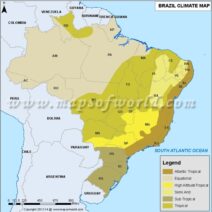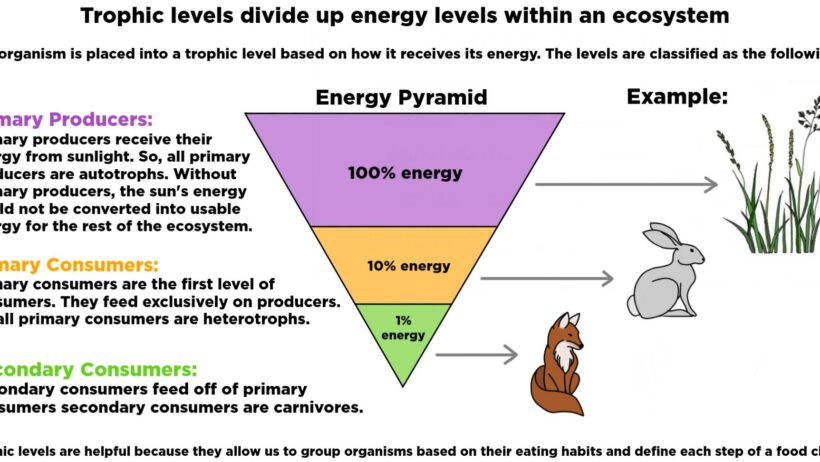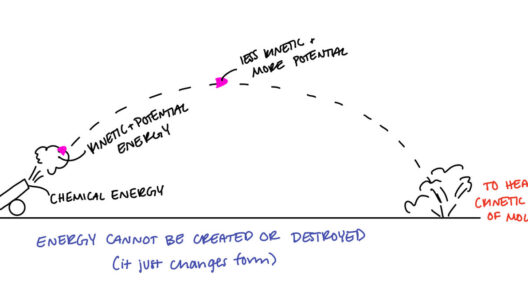The concept of the energy pyramid serves as a critical lens through which we can examine ecosystems and the intricate dynamics of energy transfer among various trophic levels. At the heart of this discussion lies the principle of energy conservation. The energy pyramid illustrates the diminishing energy available as one ascends the layers from primary producers to apex predators, nearly resembling a vast metropolis where life thrives at different altitudes, each level teeming with diversity yet ever more precariously perched upon the foundation of its base. But is energy truly being conserved within this structure, or is it simply dissipating into the ether, a tragic tale of inefficiency lurking within nature’s grandeur?
To unravel this intricate tapestry, we must first understand the foundational role of primary producers. These organisms, predominantly plants and phytoplankton, engage in the miraculous process of photosynthesis. This is where inorganic matter is transmuted into organic energy—solar energy ingeniously harnessed to fuel the web of life. Think of primary producers as the green architects of the biosphere, establishing the groundwork upon which all life is built. They capture sunlight with an artistry that speaks to the harmony of nature, creating food through a synthesis that energizes every subsequent level of the energy pyramid.
As we ascend from the base, we encounter herbivores, which consume these primary producers, embodying the transition from photosynthetic energy to the energy of movement and growth. However, during this transfer, not all energy is passed on. In fact, it is estimated that only about 10% of the energy captured by primary producers is available to the herbivores that consume them. This stark reduction can be likened to an exquisite symphony where each note is polished and perfected only to lose some of its vibrancy in transference. The energy that does not make it past this tier is dissipated as metabolic heat, cellular respiration, and waste—a poignant reminder of the inefficiencies permeating the natural order.
As we navigate further up the pyramid, we find carnivores, who prey upon herbivores, thus taking part in another transformative process in which energy becomes progressively more limited. This mid-level of consumers further reinforces the themes of energy loss, following the well-established rule of thumb in ecology that the higher one goes on the food chain, the less energy is available. The apex predators, with their commanding presence, symbolize the culmination of energy transfer within this pyramid. Yet, they too are bound by the immutable laws of thermodynamics, losing significant amounts of energy with every meal they consume. The intrigue mounts: is conservation merely an illusion in our quest for nourishment and survival?
In examining the energy pyramid, one must also consider the critical complexities of energy cycling and nutrient recycling. Energy may be diminished at every level, but it is the nutrients that maintain ecological balance. This dual pathway ensures that while energy may not be preserved entirely as it infiltrates various layers, the fundamental elements like carbon, nitrogen, and phosphorus are continually recirculated. This nutrient cycling is vital for sustaining life, creating a delicate equilibrium that allows ecosystems to flourish despite the energy losses incurred along the way. The diversity of life hinges on this cyclical dance, ensuring that while energy may ebb and flow, the sustenance of the ecosystem remains intact.
The consequences of energy loss ripple throughout ecosystems and extend their reach into larger questions about sustainability and conservation. Consider human intervention within this model; as organisms exploit resources, they disrupt these natural energy flows, diminishing both energy availability and nutrient cycling. The ramifications are dire: habitat destruction, overfishing, and climate change all punctuate the urgent dialogue regarding energy conservation. It is an ongoing saga, where the survival of myriad species rests upon our understanding of these ecological principles.
One of the most profound metaphors that emerges from this examination is that of the energy pyramid as a fragile fortress, standing tall against the forces of entropy. It draws attention to the importance of not only conserving energy but also nurturing the ecological architectures that embody it. Healthy ecosystems contribute significantly to the regulation of climate, the purification of air and water, and the stability of soil—all indispensable components of life on Earth. Thus, aside from individual energy conservation, we must collectively gravitate towards embracing practices that support the integrity of energy pyramids within various ecosystems.
What emerges from this exploration is the stunning realization that energy is neither wholly conserved nor entirely lost. The energy pyramid exemplifies a dynamic system, continually operating under the laws that govern nature. For every phenomenon of energy dissipation, there lies an opportunity for regeneration and renewal through ecological resilience. It is a narrative of coexistence, where the beauty of life thrives against the backdrop of apparent inefficiencies, compelling us to rethink our role in this intricate web.
Ultimately, the pursuit of understanding energy conservation in an energy pyramid necessitates a broader comprehension of ecological interdependencies. By engaging in conscientious practices that bolster these systems, humanity holds the potential to foster a future where the energy pyramid stands steadfast—a sanctuary where the apex and the base work in tandem, celebrating the rhythms of conservation, growth, and sustainability. As stewards of this planet, our challenge is to nurture the delicacies of this inherited fortress and engage in collaborative efforts that uphold its integrity for future generations.








